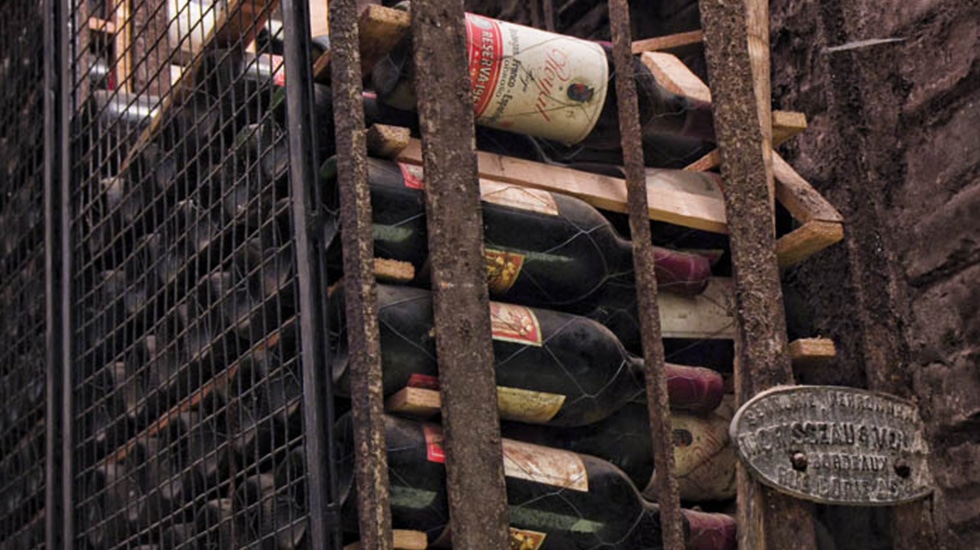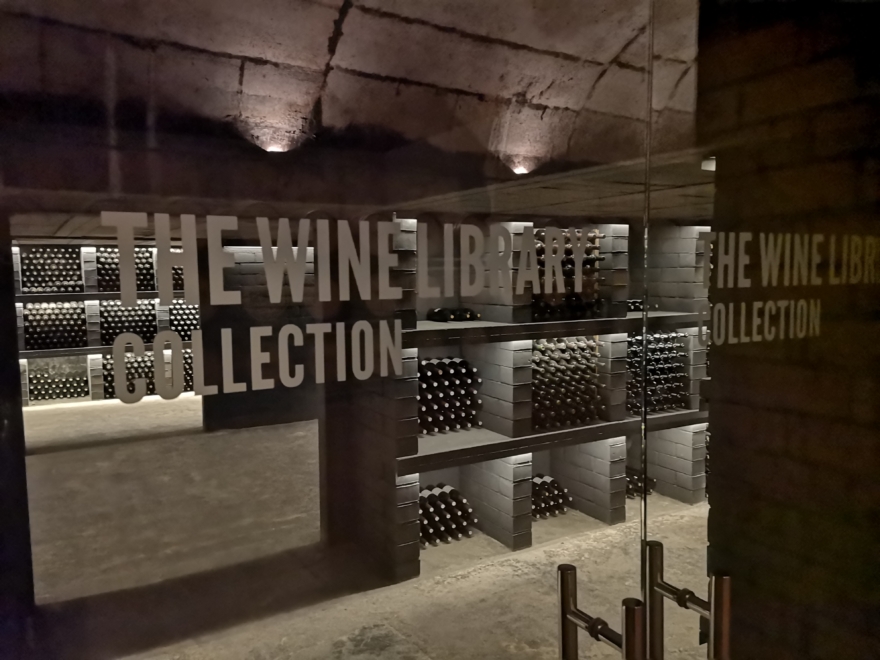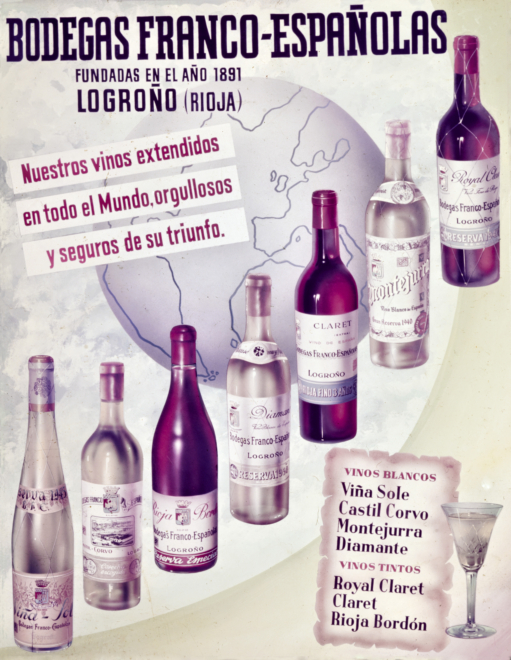

Shelf for bottles of vintage wines from Bodegas Franco-Españolas.
The market has been promoting young wines for several decades; Its simple tastes reach a wider audience, and its proliferation has pushed fine wines into the retail outlets, but its roots in wineries have prevented fashion – insidious and fleeting – from eliminating aged wines from bottle shelves. In their complexity they carry with them the years, terroir and history of the place where they are made. They are expensive to produce, but they create the cultural capital that gives value to appellations of origin. No problem drinking young, but if you love fruit, it’s time to grow up. Wine, like life, is much more complex.
“The world of wine has undergone youth dictatorship it gave newcomers a higher appreciation than those noble elixirs that were patiently cultivated in the darkest corners of wineries,” he says. Carmen Fuentes Union of Taste, an association of gastronomy experts that organizes Los Vinos del Tiempo, the first exhibition of old vintages and aged wines. this Monday at COAM in Madrid. “For many years, the prevailing idea was that the best things to capture in a glass of wine were the ringing aromas of fresh fruit and the nuances that new oak provided, such as notes of coffee, vanilla and wood,” adds Fuentes.
According to this expert, youth pressure has hurt some wine regions more than others. “In Rioja, Ribera del Duero, Penedès, Jerez or Montilla, among other regions, the nobility of fine wines is part of the wine tradition of the territory,” he says.
For many years, the prevailing opinion was that the best things to capture in a glass of wine were the ringing aromas of fresh fruit and the nuances of young oak.
Carmen Fuente
“This is the return of our traditions, our history and the magnificent heritage left to us, in our case, by those who preceded us in Marco de Jerez,” he declares. Juan José Mesa, technical director and winemaker at Williams & Humbert. His winery has a historical collection dating back to 1920. “The most complete and oldest collection is in Marco de Jerez, some of which were even sold at Christie’s auctions in London and New York. A collection covering the Single Cask vintages from 1920 to 2001, the year in which a new project began involving organically aged wines. These vintages represent variations over time, as each wine is a reflection of the harvest and weather conditions of the year,” explains the winemaker.

Mireya Torres Machassek, director of Jean Leon and director of innovation and knowledge at Familia Torres., wines from old vintages must be confirmed because they are unique wines. “Only great wines have the ability to age well and show good evolution in the bottle over time, and that needs to be appreciated. These are wines that show the value of a way of doing things, express the character of a particular terroir and demonstrate the potential of aging over the years,” the wineries say.
According to Borja Eguizabal, general manager of Bodegas Franco-Españolas in Rioja. think that These are wines that speak for themselves, wines that “don’t need to create a story around themselves, because they are wines that tell a real story. As for the wines from historical vintages from Bodegas Franco-Españolas, these are wines that have survived 3 centuries (19th, 20th and 21st).” Please note that this is the story of the winery and all the people who worked there. “This deserves respect and gives them a level completely unattainable for modern wines, for wines that are beginning to write their own history and which in most cases will find it difficult to reach the 133rd anniversary that Bodegas Franco is now celebrating. “Spanish,” he assures.
Marisol Bueno, owner of Pazo Señorans in Rias Baixas, argues that it is necessary to restore wines from old vintages “because quality varieties reach maximum expression over time.” This winery confirms that the trend is changing and “there are more interested consumers and more variety in food products. “This way there are more opportunities to drink different wines.”
On this point, all winemakers agree: the long life of these wines is associated with a pleasant moment when the Spaniards appreciate their bottled heritage. That is why this unique room with vintage wines was organized. “We are aware of this trend and are convinced that one of the most exciting features of wine is its ability to mature gracefully, enhancing its virtues over the years,” says Carmen Fuentes.

“There is a part of consumers who, when choosing wine, are more oriented towards fashion and trends. But, as in other industries, fashion is temporary, it comes and goes, it does not achieve the permanence of wines from historical harvests, wineries with a century of history,” says the director of Bodegas Franco-Españolas. Please note that in our country more and more people appreciate this type of wine. “They are linked to the desire to preserve unique jewels, to tradition and history, which, in our case, dates back more than 133 years of producing wines for aging,” he adds.
Marisol Bueno attributes the maturity of the market and greater consumer awareness to the demand for aged wines, as is happening in other countries. Mireya Torres also believes that they are more valued in other markets because the scarcity associated with uniqueness is more valued, and it is clear what that means. This applies to Nordic countries such as Germany, Holland or the Nordic countries, where the consumer is also willing to pay more. “These are wines that are not usually available to everyone, especially due to scarcity. Prices tend to be higher precisely because they are scarce and the winery devotes resources to preserving them, and not everyone is willing to pay for it. These are wines for a certain moment of consumption and for a certain type of consumer who appreciates the complexity of bottle aging,” says Torres.
This makes our history known to an increasingly demanding public; More and more people are trying to find the oldest bottles.
Borja Eguizabal, General Manager of Bodegas Franco-Españolas in Rioja
Photo: Jean Leon’s wedding
Investment in culture
The key to achieving profitability for a product that requires so much effort and resources to produce, Torres believes, is that these are small productions that are developed in parallel with the winery’s other more mass-produced, less demanding productions. aged wines. .
But winemakers believe such high production costs are an investment in consumer knowledge. Winemaker Juan José Mesa believes education is critical. “To continue and strengthen the already established line of promoting our wines as the oenological gems that they are, to ensure that they can consistently position themselves in the high-quality wine segment,” he states.
A form of investing in cultural capital. “This means that our story must become known to an increasingly demanding public. Previously, this was unthinkable, but now more and more people are eager to discover the oldest bottles that are regaining their value in the best showcases of our country,” concludes Eguizabal.
El Fondillon, a wine with a rich history.
In 2020, Fondillón 50 años de MG Wines Group was recognized by the Ministry of Agriculture as the best wine in Spain and in Independent We didn’t go to see the Alicante Designation of Origin to learn about the long historical trajectory of this unique wine.
Source: El Independiente